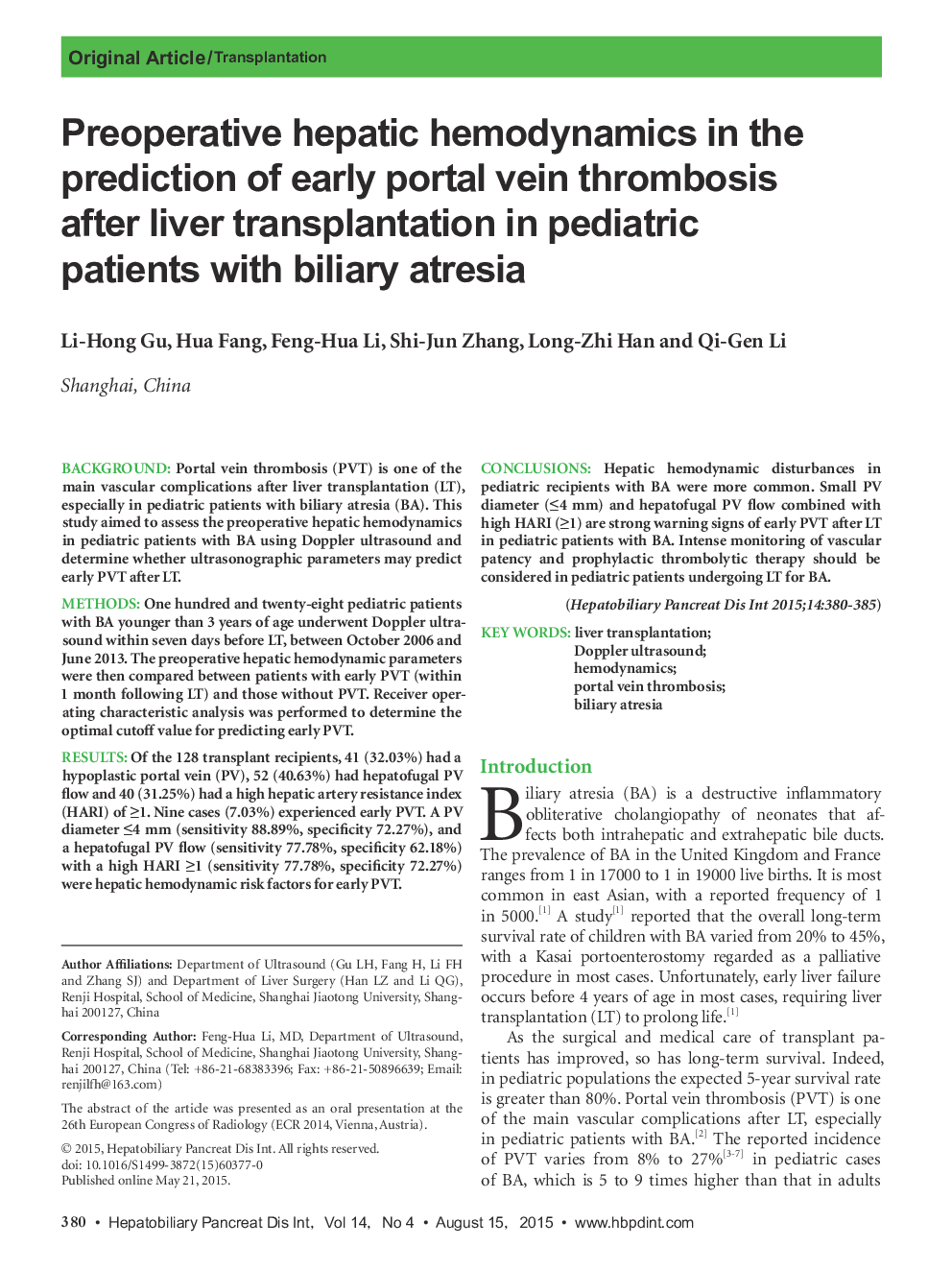| Article ID | Journal | Published Year | Pages | File Type |
|---|---|---|---|---|
| 3337152 | Hepatobiliary & Pancreatic Diseases International | 2015 | 6 Pages |
BackgroundPortal vein thrombosis (PVT) is one of the main vascular complications after liver transplantation (LT), especially in pediatric patients with biliary atresia (BA). This study aimed to assess the preoperative hepatic hemodynamics in pediatric patients with BA using Doppler ultrasound and determine whether ultrasonographic parameters may predict early PVT after LT.MethodsOne hundred and twenty-eight pediatric patients with BA younger than 3 years of age underwent Doppler ultrasound within seven days before LT, between October 2006 and June 2013. The preoperative hepatic hemodynamic parameters were then compared between patients with early PVT (within 1 month following LT) and those without PVT. Receiver operating characteristic analysis was performed to determine the optimal cutoff value for predicting early PVT.ResultsOf the 128 transplant recipients, 41 (32.03%) had a hypoplastic portal vein (PV), 52 (40.63%) had hepatofugal PV flow and 40 (31.25%) had a high hepatic artery resistance index (HARI) of ≥1. Nine cases (7.03%) experienced early PVT. A PV diameter ≤4 mm (sensitivity 88.89%, specificity 72.27%), and a hepatofugal PV flow (sensitivity 77.78%, specificity 62.18%) with a high HARI ≥1 (sensitivity 77.78%, specificity 72.27%) were hepatic hemodynamic risk factors for early PVT.ConclusionsHepatic hemodynamic disturbances in pediatric recipients with BA were more common. Small PV diameter (≤4 mm) and hepatofugal PV flow combined with high HARI (≥1) are strong warning signs of early PVT after LT in pediatric patients with BA. Intense monitoring of vascular patency and prophylactic thrombolytic therapy should be considered in pediatric patients undergoing LT for BA.
